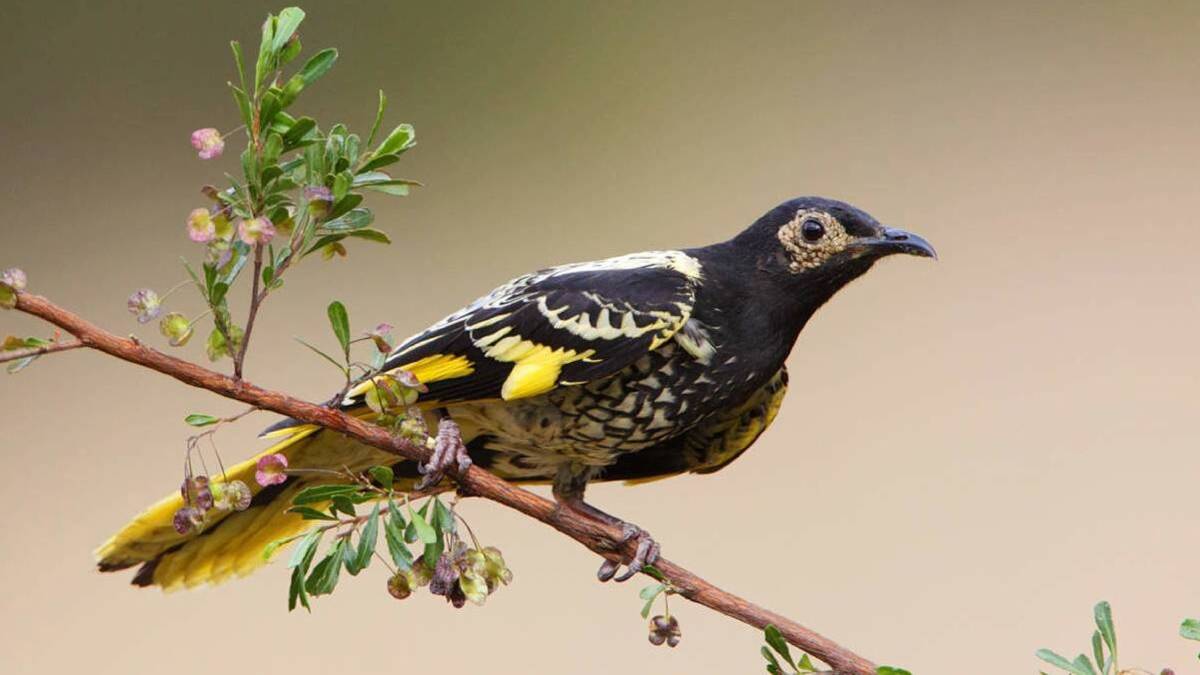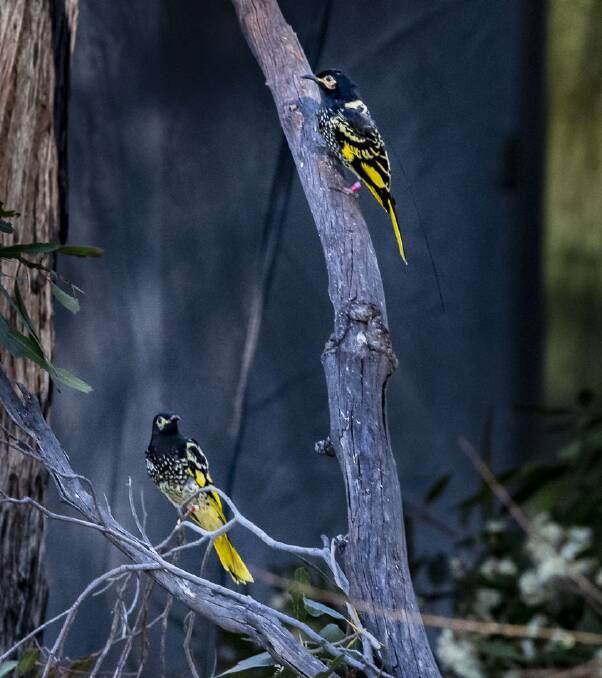
Conservationists are rejoicing following the successful release of 20 captive-bred critically endangered Regent Honeyeaters into the wild.
Subscribe now for unlimited access.
or signup to continue reading
Fitted with tiny radio transmitters and colour bands to track their movements, the birds were released at a location in the Hunter Valley where BirdLife Australia has been working with landowners and local authorities to permanently protect critical habitat for the bird for over a decade.
It is the same area where a handful of wild Regent Honeyeaters were captured to join the Taronga Zoo breeding program back in 2012, meaning the released birds are all descendants of those founders.
"It's amazing to be able to release birds back to a region where we collected for the captive breeding program, and where we have invested so much time and effort implementing recovery work for the species," said Dean Ingwersen, BirdLife Australia's Woodland Bird Program Leader and National Regent Honeyeater Recovery Coordinator.

"There are only a few hundred Regent Honeyeaters left and it is just incredible to see these birds re-join their wild cousins. This successful release demonstrates how conservation work like this can be the difference between extinction and survival."
Related content:
Another enormous boost for the released birds is the presence of a flock of wild Regent Honeyeaters that are currently feeding on abundant Eucalypt blossom at the site.
"These wild birds will hopefully help the released honeyeaters assimilate into the landscape," said Mick Roderick, Woodland Bird Program Manager at BirdLife Australia.
"We were so happy to find them here again, the Hunter Valley woodlands is one of only a handful of key regions remaining for this species.
"Regent Honeyeaters are found only in eastern Australia. They used to be found south to Melbourne and west to Adelaide, but their range has contracted severely as their numbers have declined over the past 30 years. To be able to release captive bred birds into a location containing a flock of wild birds is exactly what we wanted."
This is the first large-scale release of captive-bred Regent Honeyeaters in NSW, following on from a decade of similar successful releases in north-eastern Victoria. Further releases in NSW are planned for the future.

